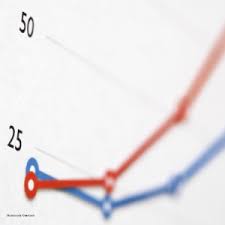 Investors in conservative KiwiSaver funds have been warned that their run of spectacular returns is at an end.
Investors in conservative KiwiSaver funds have been warned that their run of spectacular returns is at an end.
Investors in conservative and default KiwiSaver funds, which are heavily invested in cash and bonds, have seen remarkably high returns in recent years, but in its first quarterly investment report, the New Zealand Institute of Economic Research (NZIER) warns that is about to end.
In the five years to the end of March, Morningstar figures show annual returns on conservative funds of 6.7 per cent after fees but before tax and 7.6 per cent over the past three years.
Those are historically high returns and in its inaugural New Zealand Investment Quarterly, NZIER principle economist Aaron Drew said he expected conservative funds to barely outperform cash over the next seven years.
Drew said NZIERexpected conservative funds to return only 4.6 per year to 2022 before the fees deducted by KiwiSaver scheme providers take and tax.
"Sovereign bonds will perform poorly in the medium term, which would drag down the returns from conservative funds," said Drew.
Sovereign bonds are government bonds, in which KiwiSaver conservative funds invest heavily.
NZIER expected balanced funds, which invest less in bonds and cash and more in shares, to return 5.6 a year, while growth funds (again before fees and taxes) would return an average of 6.5 per cent.
Neither bonds or shares looked cheap, but with interest rates at low levels, investors aregetting a lower return for their risk on bonds than they are on shares, the report says.
"Conservative funds have performed very well in the low rate environment we have seen since the global financial crisis hit, but they are likely to significantly underperform growth funds in the long term," Drew said.
"There is a cyclical aspect to our forecast. We believe bonds, particularly sovereign bonds, are vulnerable to a correction when interest rates globally start to rise."
Drew said many KiwiSavers would be better off switching out of conservative funds into balanced and growth funds.
Conservative and moderate funds account for almost 44 per cent of the $27 billion measured in the latest Morningstar KiwiSaver Survey, he said.
"Over 40 years, the difference between a growth fund and a default fund could add up to tens or even hundreds of thousands of dollars for a KiwiSaver investor."
Drew said he did not believe KiwiSavers should be trying to "time markets" by out-smarting other investors by picking the right time to switch from one kind of asset, like shares, into another, such as cash.
He urged people in conservative funds to think carefully about whether they were in the right fund.
Meanwhile, many KiwiSaver fund providers are warning investors not to miss out on the member tax credits.
To get the $521 member tax credit (MTC) from the government people have to have saved $1042.86 in the 12 months to the end of June.
"For every dollar put into a KiwiSaver account, the government puts in 50 cents – up to a maximum of $521.43 each year," AMP said.
The tax credit is paid into a member's KiwiSaver account in July or August.
"If the IRD stood on Queen Street or Lambton Quay handing out $521 in cash, there would be queues around the block that were longer than those we see for the latest smartphone release," Therese Singleton, AMP's general manger of investments and insurance said.
"However, every year there is nearly $500 million going unclaimed in member tax credits because people either don't make the minimum contributions or don't realise the money is available."
.png)




.png?width=200&height=100&name=RE%20Investar-Logo-MRI_Colour%20web%20229x115px%20(1).png)